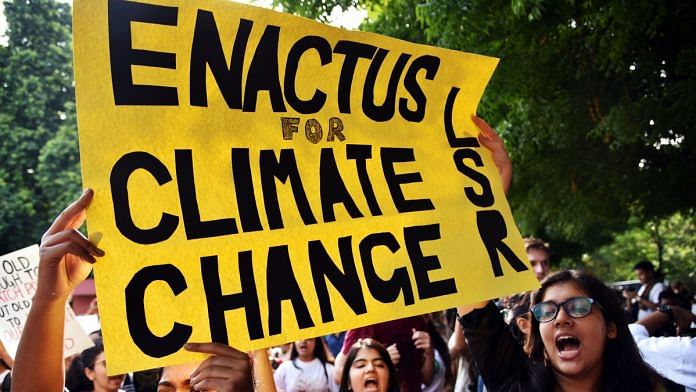London: California and China have now both set goals to “achieve carbon neutrality” by 2045 and 2060, respectively. Only California, however, has confirmed that it will end its contribution to heating the planet. China may still have ways to go after 2060.
Confused? You’re not alone, and you can blame the use of imprecise words.
California’s goal includes cutting all greenhouse-gas emissions, including carbon dioxide, methane and nitrous oxide, and offsetting what it cannot cut, according to the California Air Resources Board. China’s goal is only focused on carbon dioxide, according to Jiang Kejun, a researcher at the National Development and Reform Commission, the country’s top economic body. That’s not a small difference, even if both then-Governor Jerry Brown, in his 2018 executive order, and President Xi Jinping, in his speech last week to the United Nations, used the phrase “carbon neutrality.”
Carbon dioxide accounts for only three-quarters of the warming impact that humans are having on the planet. Other greenhouse gases (GHG) have different impacts based on their specific chemistries. For example, methane can trap many times more heat per molecule than carbon dioxide, but lives in the atmosphere for a much shorter period of time. Methane’s global warming potential is about 56 times that of carbon dioxide’s over a 20-year period and 21 times over 100 years.
We often hear more about carbon dioxide not just because it’s the most impactful greenhouse gas, but also because it’s likely the easiest to cut and thus targeted first in “neutrality” goals. Reducing some non-CO2 greenhouse gases, such as nitrous oxide produced from fertilizer run-offs, can be much harder than finding replacements for fossil fuels.
Here’s one way to quantify the difference between CO2 goals and GHG goals: to have a 50% chance of stabilizing global warming at 1.5 degrees Celsius above pre-industrial levels, the world has to reach net-zero carbon dioxide emissions in 2050 and net-zero greenhouse gases in 2067, according to the Intergovernmental Panel on Climate Change, including the use of negative emissions later in the century.
That’s why Oliver Geden, a senior fellow at the German Institute for International and Security Affairs, says that China’s net-zero CO2 by 2060 goal “can’t be directly compared” with net-zero greenhouse gas target set by California (2045), the UK (2050) and the European Union (2050). It should also not be a surprise, because the Paris climate agreement acknowledges that rich countries have a higher historical burden of emissions and thus ought to cut emissions sooner than poor countries.
Many European leaders have been using another phrase to differentiate between these goals. “We work towards climate neutrality in 2050, which is not only about carbon, it’s also about other gases,” said Frans Timmermans, vice president of the European Commission, in March.
But even that’s not good enough for climate scientists. “I don’t know what climate neutrality means actually,” said Glen Peters, research director at the Center for International Climate Research. “There’s potential for misinterpretation.”
Humanity’s impact on the climate system goes beyond just pumping greenhouse gases into the atmosphere. Vehicles and factories also eject particulate matter or aerosols into the atmosphere that can reflect sunlight and even, surprisingly, lower the impact of heat-trapping greenhouse gases. To be climate neutral, then, would mean also stopping any particulate matter pollution, but that’s not something the EU has promised.
Peters and Geden both prefer the use of “net-zero carbon dioxide” or “net-zero greenhouse gases” because the terms have a more precise meaning. That won’t mean everyone will stop using other terms, but it would make it easier to be on the same page when such commitments are clearly explained on first mention.
Geden says the confusion around these climate terms is “widespread” among journalists, non-governmental organizations and policy makers. And communicating in different languages only makes things worse. When German environment minister Svenja Schulze translated European Commission President Ursula von der Leyen’s reaction to China’s 2060 pledge, she called it a commitment to “climate neutrality” (klimaneutralität) rather than “carbon neutrality” (kohlenstoffneutralität). The difference in the long term could mean living on two different planets. –Bloomberg
Also read: Mini-grids — the little-known clean energy revolution



